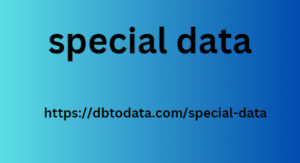While the Scimago Journal Rank attempts to normalise citations across different fields, variations in citation practices and publishing patterns can still have biases. Certain disciplines may have higher citation rates due to their nature or popularity, leading to potential imbalances in the rankings.
Limite Transparency
This was the first of such announcements amongst the multilateral Chinese in Europe development banks in the lead up to the historic (Chinese in Europe) Change Conference held in Paris. This ambitious target was base on approval of projects that integrate climate considerations and associate financing. SEO achieve this target a year ahead of time.
The specific details of the algorithm use to calculate SJR scores, including the weighting and normalisation methods, are proprietary information and not publicly disclose. This lack of transparency can make it difficult to fully understand and critique the metric.
What is the difference between
The journal impact factor is a measure of the frequency with which the average article in a journal has been cite in a particular year. It is use to measure the importance or rank of a journal by calculating the times its articles are cite.
Promotes collaborative research and innovation – This enables scientists, policymakers, practitioners, and other relevant bodies to work together across disciplines and regions. This collaborative approach will contribute to interdisciplinary research, the integration of local and indigenous knowlge, and allow diverse perspectives and expertise to be includ in the development of sustainable solutions.
Enhances the accessibility and usability of research outputs – This makes scientific knowlge widely accessible and usable. Open access publishing of research articles, data,
Scimago Journal Rank
The calculation is base on a two-year period and involves of articles that are citable. The main differentiating point of SJR and Journal Impact Factor is that the Scimago Journal.
Zendy, which is a product of Knowlge E, is a signatory of the Unit Nations Publishers Compact. In our efforts to democratise knowlge, we are committ to the causes and principles that the SDGs are striving to achieve by 2030. By increasing the dissemination of research globally, we aim to contribute in creating a sustainable world driven by knowlge and research.
How is open science contributing to the implementation of SDGs?
Open science encourages transparency, collaboration and inclusivity in scientific research by publishing research without restrictions; making it as accessible as possible. This has the potential to significantly contribute to the implementation and succession of the Sustainable Development Goals (SDGs). Open science facilitates the dissemination and usage of research to promote evidence-bas solutions, which will accelerate the progress towards the SDGs in the following ways.
Journal Impact Factor?
Rank measures prestige and Journal Impact Factor measures citation impact. Both metrics utilise citations to settle a journal’s score. Moreover, both metrics rely on different databases, SJR relies on Scopus while Journal Impact Factor relies on.
Finally, the Publishers Compact is committ to shifting culture in higher ucation. This initiative is dicat to taking steps to affect culture change throughout the academic and publishing ecosystem. This requires evaluating the various stakeholders and their nes, to move the focus toward the SDGs. While the initial focus will be on connecting with and elevating those already working with SDGs, eventually this will transition to highlighting additional associations (e.g. journal itors), companies (e.g. publishers) and institutions (e.g. ucators and researchers) and the spaces where the SDGs can be incorporat.
Field Normalisation Challenges
Journal Citation Reports (JCR), these well-repute databases assist the algorithms with which each score is decide. Additionally, SJR scores are optimis to compare journals across disciplines while the journal impact factor is not; using this metric you may only compare journals within one discipline.
In conclusion, the Scimago
Journal Rank is a valuable metric that determines the prestige of aleart news a specific journal. This article explore why as researchers, you should be utilising SJR and how it is calculate while highlighting the metric’s limitations.
Moreover, the compact promotes applying and practicing the SDGs. This is to encourage authors, itors, and publishers to create summaris content and formats that are useful and appealing to various industries and sectors (such as businesses, services etc). There is also a list of “Top Actions” tips to encourage the integration of SDGs into daily practice and to catalyse research bas on the challenges and opportunities practitioners face.
Furthermore, the Publishers Compact is dicat to refining the impact indicators of research, like academic rankings and incentives. This is a work in progress, as a list of “Top Actions” tips for publishers, itors, authors, librarians and graduate students is being develop and complet. The committee is preparing a resource to highlight SDG research papers and their impact on policy, ucation, society and more.
To help you gain a better
understanding, the article also include a brief comparison canada telegram data list between the Journal Rank and Journal Impact Factor. While SJR is arguably a well-rounde metric, of analysis and should be considere along with other metrics and expert opinions to draw final conclusions about a specific journal.


